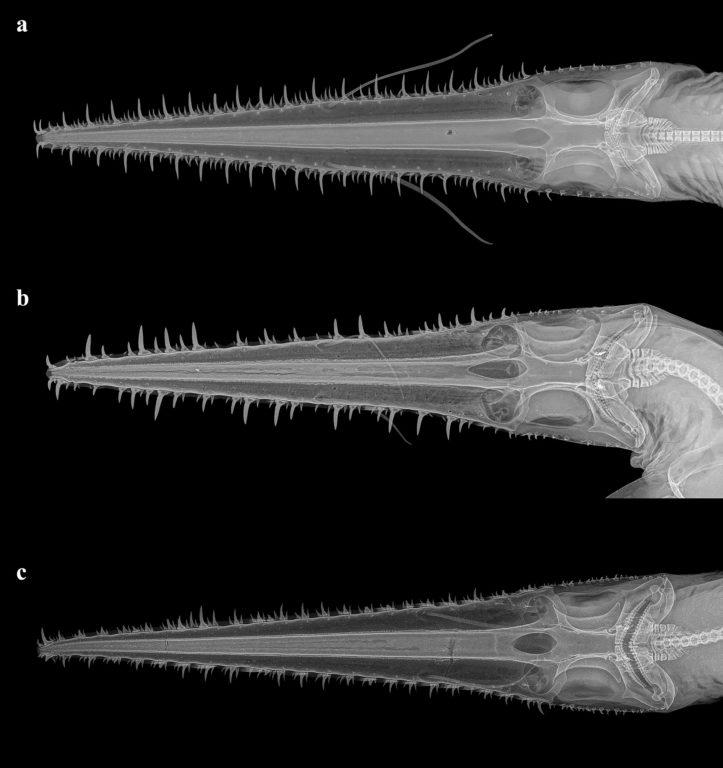Two entirely new species of shark, dubbed six-gill sawsharks, have been identified in the West Indian Ocean.
CNN World reported that the two species were discovered separately. The first, known as ‘Pliotrema annae’, was caught by a fisherman in Zanzibar.
The other species, known as ‘Pliotrema kajae’, was discovered in a more ‘traditional’ manner. Snouts were collected in Madagascar as researchers collaborated with locals and additional specimens were discovered in museum collections thereafter.
Scientists from Hamburg’s Elasmobranch Research Laboratory (ERL), were researching small-scale fisheries off the coasts of Madagascar and Zanzibar, and were privy to these findings which prompted them to investigate. Their findings were published on Wednesday, 18 March.
The newly-discovered sawsharks both have very distinctive snouts. They are long, and packed with teeth, resembling a saw. Additionally, these sharks can grow up to about 1.5 meters in length.
Simon Weigman, a researcher at ERL and the lead author in the research on these sharks, said the finding was ‘simply astonishing’.
”Astonishing” barely covers it; these sharks are pretty ridiculous looking, especially from below”,
Image: Twitter / Andrew Temple
Image: Twitter / Andrew Temple
Until now, there has been only one known species of six-gill shark – ‘Pliotrema warreni’. These two new discoveries add to the list of recognised sixgill species and will greatly help scientists in gaining knowledge about this type of shark.
It is known that these sharks are carnivorous, with their diet made up primarily of fish, crustaceans and squid. The saw (snout), is used to hunt prey.
Study co-author Dr. Andrew Temple, from Newcastle University, in a statement:
‘The discovery re-enforces both how important the western Indian Ocean is in terms of shark and ray biodiversity, but also how much we still don’t know,’
Temple added that while they may have just been discovered, they could already be vulnerable.
‘Knowledge of sawsharks in the western Indian Ocean is generally still scarce. But considering their known depth distributions, both new species are likely affected by fishing operation. This assumption, combined with the limited range and apparent rarity of both new species, raises concerns that they are vulnerable to overfishing and might be in continuing decline,’
Lead researcher Weigman, said in an article he published on The Conversation:
‘The discovery of two new sixgill sawsharks also demonstrates the value of scientists working with local communities. Without the participation of fishers we may never have found these animals,’
Image: Twitter / WWF Sharks



